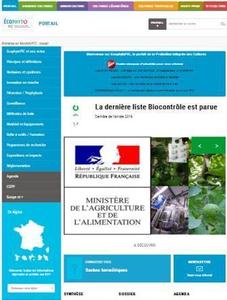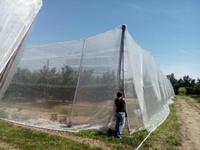
Making the most of EcophytoPIC
EcophytoPIC, France’s Integrated Pest Management portal, has introduced four news sections which make it simpler to keep up to date with fresh information on IPM. These sections are dedicated to summaries which offer one-page information on a technique, pest or event; dossiers providing complete and detailed information on a particular theme; news from the press and around the web; and a section enabling users to inform themselves on a particular innovation or IPM tool.
For those with some French or a good translation program, the summary section offers users with a page detailing all the essential information on a technique or pest with links to more detailed sources of information. These summaries include, for example, one dedicated to codling moth (Cydia pomonella ) in apple and pear crops.
This page begins by explaining the biology of the pest, an understanding of which is considered essential for effective control, an overview of prophylactic measures (in particular the importance of removing contaminated fallen fruit), surveillance and optimising chemical control (the availability of Decision Support Tools) and pesticide resistance.
The page then examines alternative control measures, which for this particular pest are varied and can be used in combination. They include encouraging the presence of natural predators such as some birds and bats (providing nest boxes, for example), combined with the use of sticky traps or pheromones. Another possibility is the use of Alt’Carpo nets to drastically reduce the entry of pests into the orchard or biocontrol using Cydia pomonella granulovirus, alternating different isolates to avoid resistance problems.
Further information for each of these options is then available through links to information sheets on the GECO database, France’s site to support the transition to agroecology. GECO comprises a knowledge base and forum and is supported by a number of French institutions, including ENDURE partner organisations ACTA and INRA.
Also included in the summaries are links to ongoing research work. For codling moth, for example, one project is examining the use of a central Asian parasitoid, while another is examining Sterile Insect Techniques (SIT). For further inspiration, the summary also includes links to farmers who have conducted their own experimentation as part of the DEPHY innovative farm network. For codling moth, these include an orchard in southwest France which has used nets and pheromones to lower its Treatment Frequency Index and a pear orchard which has employed multiple levers in its IPM approach.
Other summaries include an examination of agroecological infrastructure, including links to videos, books and other documentary resources including technical information available on the GECO database such as the inclusion of floral strips on field borders, establishing and maintaining hedges, creating habitat to encourage beneficials in orchards and agroforestry. Examples of these approaches on real-life farms in the DEPHY network include cereal systems, vineyards and orchards.
EcophytoPIC’s dossier section brings together all the information available on the portal concerning a particular IPM theme. Recent additions include the durability of varietal resistance, advances in biocontrol, non-intentional effects of pesticide use and risk prevention and IPM for pests in perennial crops.
The news section provides access to articles judged to be of interest in the trade and scientific press as well as items from websites concerning crop protection. Finally, the ‘Did you know?’ section addresses recent technical or regulatory articles.
For more information:
- Visit the EcophytoPIC portal
- Visit the GECO website
Last update: 24/05/2023 - ENDURE © 2009 - Contact ENDURE - Disclaimer

